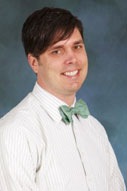Pediatrician’s Corner

Healthful Living
We should all think about taking care of our own health, and raising healthy children– let’s start with a healthy pregnancy and good dental health for your children.
Healthy Pregnancy
One way of helping to prevent birth defects is to be healthy yourself during your pregnancy. Birth defects are common and costly. A baby is born every 4½ minutes with a major birth defect in the United States. Not all birth defects can be prevented. However, all women can make healthy choices and adopt healthy habits to help lower their risk of having a baby born with a birth defect if they get pregnant. You can do this by making a PACT for your and your child’s health.
Plan ahead
- Get as healthy as you can before you get pregnant.
- Take folic acid (400 micrograms – mcg) every day.
Avoid harmful substances
- Avoid drinking alcohol and smoking.
- Be careful with harmful exposures at work and home.
Choose a healthy lifestyle
- Eat a healthy diet that includes fruits, vegetables, whole grains, low-fat dairy, lean proteins, and healthy fats and oils.
- Be physically active.
- Work to get medical conditions like diabetes under control.
Talk to your healthcare provider
- Get a medical checkup.
- Discuss all medications, both prescription and over-the-counter.
- Talk about your family medical history.
You and your loved ones can participate in a PACT and take these important steps toward a healthy pregnancy.
Children’s Oral Health
Here are some tips to keep in mind to ensure your kids have healthy teeth.
Four out of ten children have dental caries by the time they reach kindergarten – and these can be prevented. You can start taking care of your baby’s teeth even before they even have any. Babies should never be put to bed with a bottle – even one with breast milk (which is the best first food for your baby). After your baby eats, use a soft, clean washcloth to wipe their gums.
Tooth brushing begins as soon as your baby has her first tooth. For young kids, you do not need to use much toothpaste – for children under three years old, use a smear of fluoride toothpaste the size of a grain of rice and brush their teeth twice a day. Your child also needs fluoride in their diet for healthy teeth. Fluoride is found in many foods and is added to drinking water in many places. Talk to your doctor about the water your child drinks. If it does not contain fluoride, your doctor may give you a prescription for fluoride drops or chewable tablets. Make an appointment for your child to see the dentist by their first birthday or within six months of their first tooth. You can ask your doctor for help finding a dentist for your child if you do not have one already.
Children ages three to six should brush their teeth twice a day with fluoride toothpaste. Use a pea-sized amount of toothpaste. You should put the toothpaste on the brush, and help them brush their teeth. Look for a toothbrush with a thicker handle – as that is often easier for a child to hold. The toothbrush should have soft bristles. Children should brush their teeth for two minutes. You can use a timer, or make it even more fun and sing a song! Encourage your children to spit out the toothpaste when they are done brushing. Do not rinse their mouths with water or give them something to drink right after they brush their teeth.
It’s never too early to think about oral health for your children – and incorporating brushing into your children’s routines is one way to keep their teeth healthy. Make it a habit to brush their teeth every day after breakfast. Also, incorporate tooth brushing into bed time routines.
Starting – and keeping – these habits will help ensure you and your family are healthy.